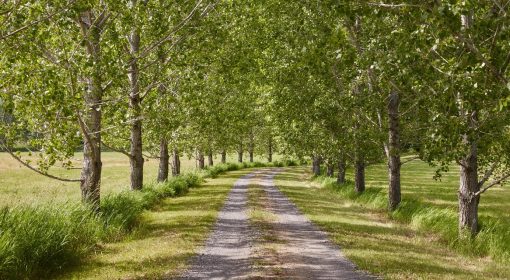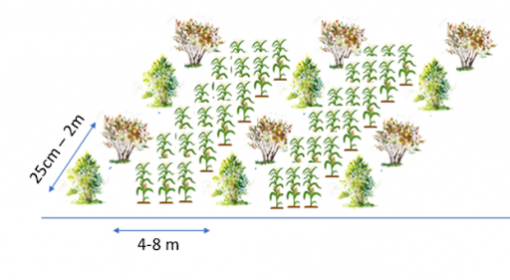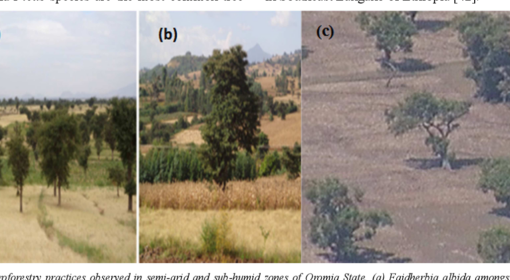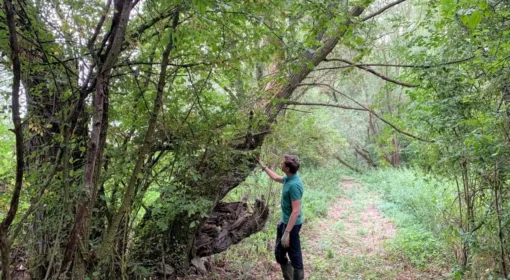By: Karim Nawaz

In the global push to fight climate change, planting trees has become the go-to solution, celebrated for its ability to store carbon and restore landscapes. Big campaigns like Africa’s “Great Green Wall”, Ethopia’s ‘Green Legacy” Pakistan’s “Billion Tree Tsunami” or the 1 Trillion Trees Initiative have spread the idea that more trees always mean a healthier planet. There is very much value in this, but in dry regions—where rain is scarce and the land is harsh—it is shrubs rather than trees that make most difference. The truth is, in these places, shrubs aren’t just a backup option; they’re usually the better choice, especially when it comes to protecting water sources and keeping dams from silting up.
Trees seem like the obvious answer—they prevent erosion, store carbon, and help regulate water—but only if they can actually grow. In arid and semi-arid regions, many tree-planting efforts falter because the saplings wither without constant care, and even the survivors often don’t deliver the expected benefits. Worse, thirsty tree plantations can drain already limited water supplies and even speed up soil degradation. Nowhere does this mismatch matter more than in the watersheds that feed dams and reservoirs. When heavy rains hit these areas, loose soil washes downstream, clogging reservoirs and shortening the lifespan of critical water storage systems.
This is where shrubs shine. Unlike trees, which struggle to establish deep roots in dry soil, shrubs like Tamarix and Atriplex are built for these conditions. Their dense, widespread root systems grip the earth tightly, reducing erosion far more effectively than trees in dry landscapes. Studies in places like the Mediterranean and desert regions show that shrub-covered catchments cut sediment flow by 30-50% compared to tree plantations, making them a smarter choice for protecting dams.
Shrubs also win when it comes to water efficiency—a must in dry zones. Trees lose huge amounts of water through their leaves, reducing part of the runoff that fills reservoirs. Shrubs, on the other hand, are water-saving experts. With small, waxy leaves and deep taproots, species like the “creosote bush” thrive on just a fraction of the rainfall trees need. By choosing shrubs over trees in these areas, we not only help vegetation survive but also protect the water supplies that farms and communities depend on.
The practical benefits are just as clear. Planting trees in drylands is expensive—it requires nurseries, irrigation, and constant replanting. Shrubs, though, can often be grown by simply scattering seeds, slashing costs by 60-80% while still thriving. China’s “Kubuqi Desert” restoration is a perfect example: early attempts with poplar trees failed miserably, but switching to native shrubs turned the project around. Similarly, in Africa’s Sahel, large-scale tree-planting schemes in the 1970s and 80s had dismal survival rates until programs like “Farmer-Managed Natural Regeneration” (FMNR) started focusing on shrubs and letting trees grow naturally where they could.
Beyond the science, there’s the wisdom of local communities, who’ve known for generations that shrubs—not forests—are the key to surviving in drylands. From Iran’s ancient qanat systems, which use shrub belts to protect water channels, to the brush management practices of the Navajo, indigenous knowledge has long recognized what modern science is now confirming: in arid regions, shrubs are the foundation of resilience. Ignoring this in favor of blanket tree-planting campaigns isn’t just ineffective—it overlooks the deep understanding of the people who’ve lived with these landscapes for centuries.
With climate change making droughts harsher and water scarcer, the pressure on dams and reservoirs will only grow. The answer isn’t to plant more trees where they don’t belong, but to work with nature—choosing the right plants for each ecosystem. In dry watersheds, that means embracing shrubs for what they are: tough, water-wise, and perfectly suited to protect soil and water supplies. The goal shouldn’t be to fill the land with trees, but to restore healthy, functioning landscapes. And in the desert, that health often comes in the form of a humble shrub.



